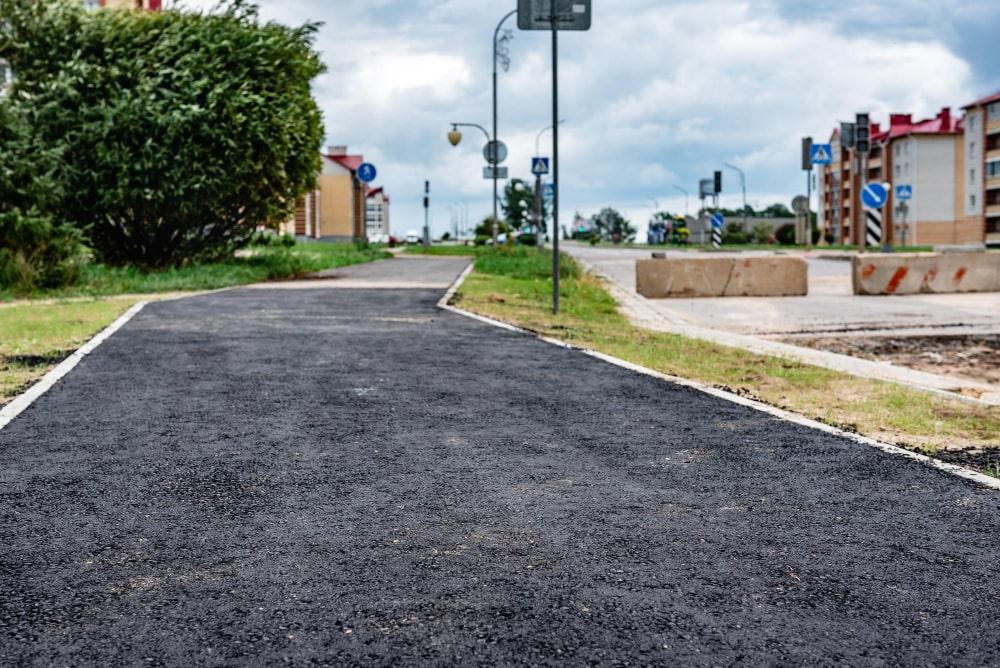
From paving roads and highways to parking lots, asphalt is among the most used materials in the world. Besides being tough, cost-effective, and resistant to intense traffic flow, it is one of the favorite choices for infrastructure projects. But how is asphalt made to balance both quality and efficiency? Making asphalt requires adequate methods with quality materials that ensure its long life in performance. In this article, we’ll explore how asphalt is produced, the steps involved, and how modern advancements in technology help ensure that it meets the highest standards of quality and efficiency.
What Is Asphalt Paving?
The asphalt pavement is laying asphalt materials on the roads, driveways, and parking lots for a smooth, durable surface. Asphalt itself is manufactured using bitumen as a binding force semi-solid, heavy, thick liquid of the by-products or petroleum refining process. A solution of flexible asphalt resistant against bad weather, resistance against wearing down over time, displays itself as strong, multi-potent, rather budget-friendly, and very resistant.

The composition of asphalt paving includes several key ingredients:
- Crushed Stone: This forms the structural foundation, hence providing the pavement with strength and durability.
- Gravel: It also contributes to filling the gaps among larger aggregates and provides stability to the mass; it is important in the contribution of surface texture.
- Sand: Sand is added to the mixture for compaction and to give the surface a smooth finish.
- Bitumen: Bitumen is derived from petroleum and serves as a binding agent that holds the mixture together; it gives strength and flexibility to asphalt.
These combined ingredients are mixed together at high temperatures to a homogeneous ductile product laid on the desired surface. Thus, it gets an even, durable, and strong pavement as a result; it could support the traffic load intensities and also different environmental conditions.
How Is Asphalt Paving Manufactured?
The manufacturability of asphalt paving is keenly observed from the inception to ensure the finished product is good enough to meet all the specific requirements of a project. Accordingly, asphalt is carefully produced by mixing raw materials in the right proportion and at an exact temperature that gives good pavement and long-lasting results. The following overview identifies how asphalt paving is manufactured:
Asphalt Type Selection
Before the manufacturing concrete process starts, the type of asphalt to be used should be selected, considering the project and climate. The different projects call for different asphalt mixes, and the choice of mix depends on factors such as the intended use of the pavement highways, residential streets, or parking lots and the local weather conditions. For example, in areas where the climate is cold, a mix that is resistant to freeze-thaw is used, but in areas of warmer climates, a mix that can flex might be required because of heat and heavy traffic.
Heating the Aggregate
The first process involved in construction is the heating of aggregate, comprising crushed stone, gravel, and sand. The drum or other specialized equipment is used to heat the aggregate sufficiently warm and dry before mixing it with asphalt binder. This step is an important preliminary operation, creating the correct consistency in asphalt and allowing proper bonding between bitumen and aggregates.
Mixing Hot Liquid Asphalt with Heated Aggregate
Once the aggregate is heated, it is mixed with hot liquid asphalt-also known as bitumen-to produce what’s termed Hot Mix Asphalt or HMA. The hot liquid asphalt is usually heated to temperatures of between 300 to 350°F (150 to 175°C) to attain a workable state. The mixing asphalt paving process combines the hot liquid asphalt with the heated aggregate to a uniform and cohesive mixture. This mixture is kept at high temperatures until it is ready for application on the paving site. Transportation and Application Immediately after preparation, the hot mix asphalt is transported to the site, laid down by the use of specific paving equipment. It is laid and compacted while still hot in order to give good bonding and an even surface. Compaction helps to get rid of air pockets, ensuring that the asphalt is dense and stable for durability.

Uses of Asphalt Paving
Asphalt paving from leading manufacturers is versatile and durable in nature, used for different purposes. In most cases, it is being used to achieve smooth and lasting surfaces in several areas of infrastructure. There are numerous types of asphalt mixes, with each suited to certain conditions and requirements that ensure the right type is selected for every project.
The are several types of asphalt paving systems:
Hot Mix Asphalt (HMA)
The most common form of asphalt is manufactured by mixing hot liquid asphalt with heated aggregate at about 300 to 350°F or 150 to 175°C. It is characterized by high strength, durability, and resistance to heavy traffic loads. HMA is generally used for high-traffic areas like highways and main city streets.
Warm Mix Asphalt
Warm mix asphalt is produced at significantly lower temperatures, typically within the range of 200 to 250°F (93 to 120°C). As such, it is much more ‘environmentally friendly’ as it uses far less energy, leading to fewer emissions. It is used on projects that are located in cooler climates or where limited environmental disturbance is necessary; for instance, cities and residential streets.
Cold Mix Asphalt
Cold Mix Asphalt is manufactured without heat, thus it becomes a rather economical option for temporary repairs or smaller jobs. It is great for pothole patching and repairing small areas of roads. Not as durable as HMA, it is one viable option for quick fixes; it is also easy to apply without requiring major equipment.
Below, we can see the application areas of asphalt repair material:
Highways
The pavement on highways must be strong and hard to resist high volumes of traffic as well as heavy abrasion caused by it. Hot Mix Asphalt is the most common type in areas with high volume due to its ability to resist the stress exerted by high speeds, large vehicles, and weather changes. Strength and durability are essential features of HMA, thus very suitable for long lengths of highways.
City Streets
This includes, among others, reasons that it goes down smoothly, and durable, and holds well to daily onsets of traffic. Based on climatic conditions and needs, Hot Mix Asphalt and Warm Mix Asphalt could be applied on the city’s street roads. Since the frames of the hot asphalt cement mixture at most have variability for usage, it assures flexibility that suits multiple usages for asphalt from residential driveways up to high-traffic business district roadways.
Driveways
Asphalt is also hugely popular for residential driveways; it provides a really affordable surface that lasts long. Cold Mix Asphalt is normally used in smaller projects of residential areas, while Hot Mix Asphalt (HMA pavement) is applied to large and high-traffic driveways that require more durability.
Parking Lots
Asphalt paving is widely used for parking lots because it can handle both light and heavy traffic loads. It provides a smooth, even surface that is easy to maintain and repair. Hot Mix Asphalt is usually used for parking lots, especially those that experience frequent vehicle movement and high volumes of traffic.
Contact AMED Today to Learn More
For the best and most reliable asphalt paving, consider AMED. From guiding you through the proper mix of asphalt for your specific needs to the actual laying to achieve a smooth, durable surface, be assured that AMED will get the job done. Be it a highway, city street, driveway, or parking lot, AMED is your go-to for the best-in-class asphalt solutions that promise efficiency and longevity.
For more information or to discuss your next project, please don’t hesitate to contact us. Contact AMED today and find out more about how we can help with all your asphalt paving needs. Let us be your partner in creating a strong and reliable surface that will last.










